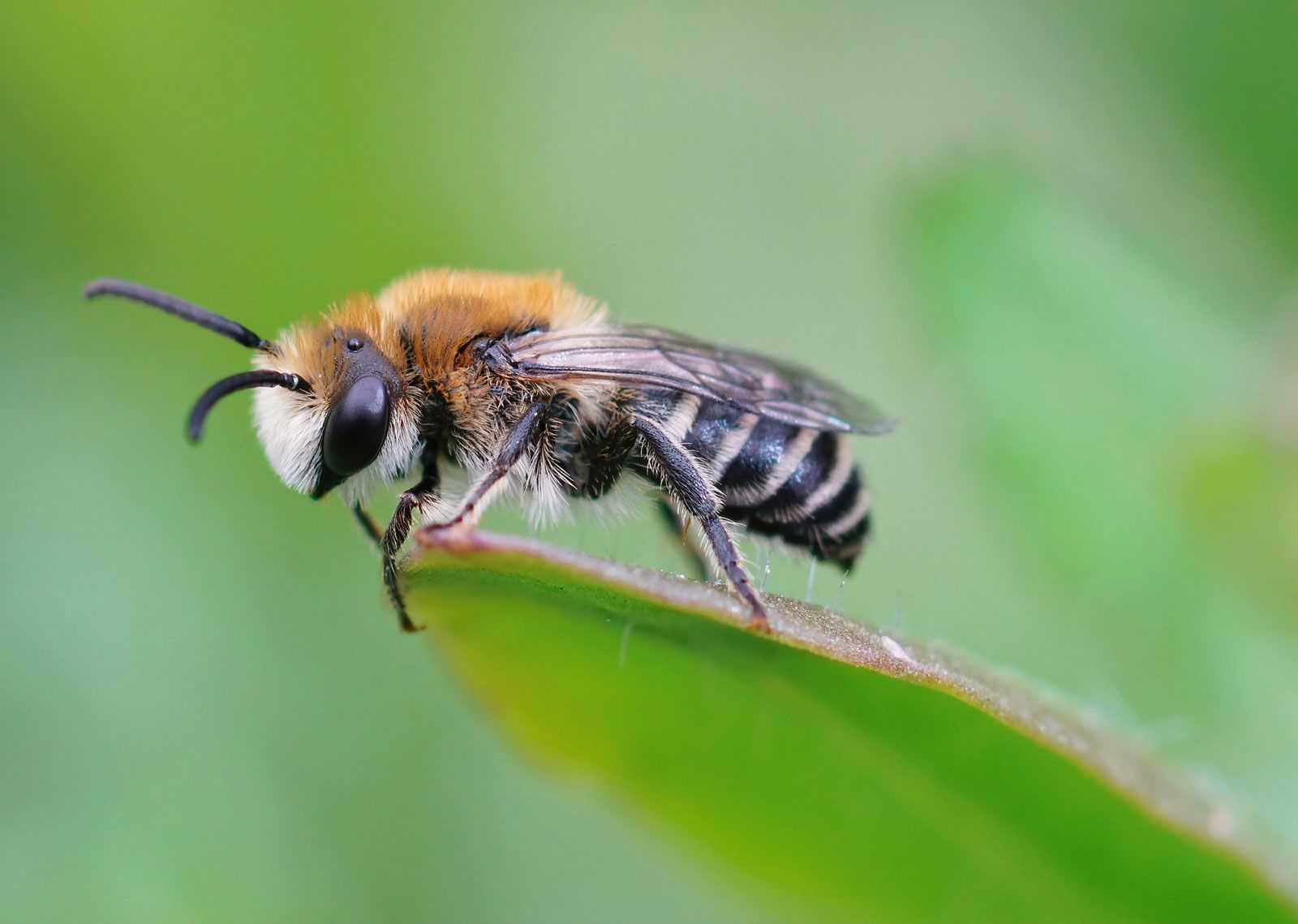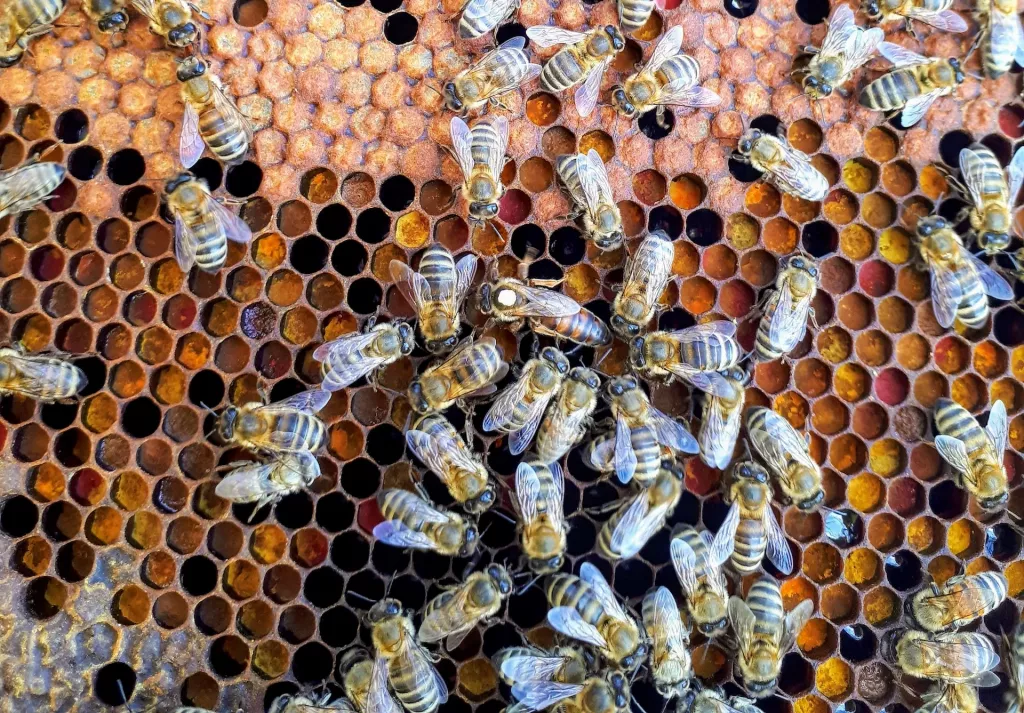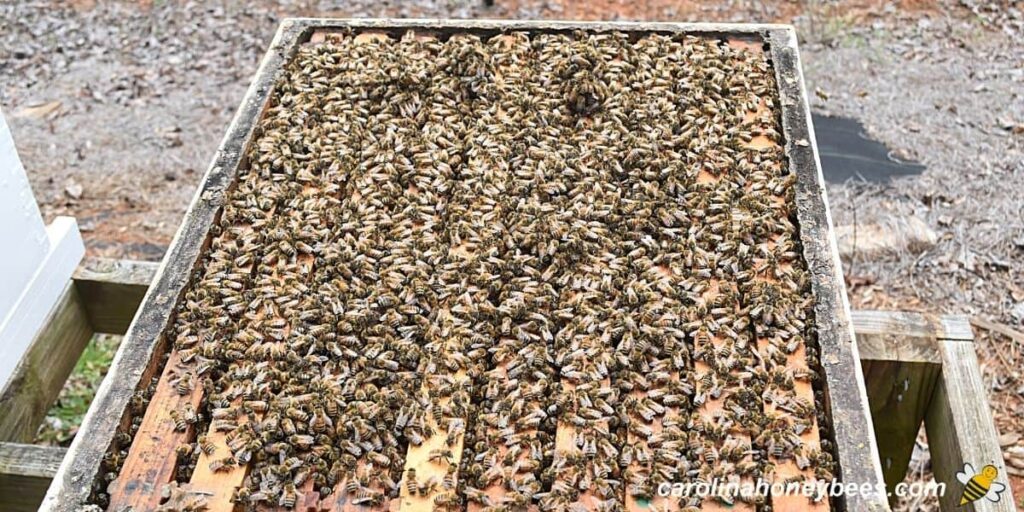
Are you curious about how many bees it takes to start a hive? Well, wonder no more! In this article, we will explore the magic number of bees needed to kickstart your very own hive. Whether you are a novice beekeeper or simply interested in learning about the fascinating world of bees, we’ve got you covered. So, let’s jump right in and discover the perfect bee count to begin your buzzing adventure!
Factors to Consider
Location
When starting a hive, the location plays a vital role in the success of your beekeeping endeavor. Bees require a suitable environment with ample forage, access to water sources, and protection from extreme weather conditions. It is important to choose a location that provides abundant flowering plants throughout the year and is free from chemical residues that may harm the bees. Additionally, be mindful of your neighbors and any local regulations regarding beekeeping in your area.
Type of Hive
Selecting the right type of hive for your needs is essential. There are several options to choose from, including Langstroth hives, top-bar hives, and Warre hives. Each type has its own advantages and considerations, so it is important to do your research and select the hive that aligns with your goals and preferences. Factors such as ease of maintenance, hive management techniques, and compatibility with local beekeeping practices should be taken into account.
Bee Species
Different bee species have varying behavior, productivity, and resistance to diseases. The two most common species in beekeeping are the European honey bee (Apis mellifera) and the Italian honey bee (Apis mellifera ligustica). These species are known for their docile nature, excellent honey production, and overall suitability for most beekeeping operations. However, it is always advisable to consult local beekeeping associations or experienced beekeepers to determine the most suitable bee species for your specific region.
Purpose of the Hive
Determining the purpose of your hive will help guide your decision-making process. Are you interested in beekeeping as a hobby, or are you looking to produce honey on a larger scale? Perhaps your main goal is to provide pollination services to support local agriculture. Based on your objectives, you can then decide on the appropriate hive size, bee population, and management practices needed to achieve your desired outcomes.
Choosing the Right Number of Bees
Calculating the Size of the Colony
To determine the suitable number of bees for your hive, it is essential to consider the size of the colony. Bees live in a complex society organized around a queen bee, worker bees, and drones. The number of bees in a healthy colony can range from a few thousand to tens of thousands, depending on various factors such as available resources, the strength of the colony, and the local environment.
Number of Bees per Hive Component
When deciding on the number of bees per hive component, it is important to note that not all bees will reside in the brood chamber or honey supers. Bees distribute themselves throughout the hive, with the queen typically residing in the brood chamber and the worker bees occupying both brood cells and honey storage areas. A general guideline is to aim for around 10,000 to 20,000 bees when starting a hive, as this population can adequately perform their required tasks and ensure a healthy and productive colony.

Different Hive Sizes
Langstroth Hive
The Langstroth hive, named after its inventor Reverend Lorenzo Lorraine Langstroth, is the most commonly used hive type. It consists of multiple boxes or supers stacked vertically, each containing frames for the bees to build honeycomb and raise brood. The Langstroth hive comes in different sizes, with the most common being the eight-frame and ten-frame configurations. The larger ten-frame Langstroth hive can accommodate a larger bee population and honey production compared to the smaller eight-frame hive.
Top-Bar Hive
The top-bar hive is a horizontal-style hive that consists of a single box with removable bars, where the bees build their brood comb. This type of hive is popular among beekeepers seeking a more natural approach to beekeeping, as it allows the bees to build their comb according to their natural instincts. Top-bar hives are generally smaller in size, making them suitable for beekeepers with limited space or those who prefer a low-intervention management style. The smaller size also means that the bee population in a top-bar hive is typically smaller compared to other hive types.
Warre Hive
The Warre hive, also known as the “People’s Hive,” was developed by French beekeeper Abbé Émile Warre. It is a vertical hive with multiple boxes stacked on top of each other. Unlike the Langstroth hive, the Warre hive employs a top-bar management system, similar to the top-bar hive. This hive design aims to mimic the natural habitat of bees, allowing them to build comb in a more organic manner. The Warre hive is often favored by beekeepers who prioritize a hands-off approach and prefer to let the bees manage their own colony size and population.
Starting with a Small Bee Package
Package Size
Starting with a small bee package is a popular option for beginner beekeepers. A bee package typically consists of a queen bee and a small number of worker bees. The number of bees in a package can vary but is usually around 3 pounds, which roughly translates to 10,000 to 12,000 bees. This smaller initial population allows for easier management and reduces the risk of overwhelming a beginner beekeeper.
Queen Bee
The queen bee is the heart of the hive, responsible for laying eggs and maintaining the population. When starting with a small bee package, the queen bee is usually included in the package. It is important to ensure that the queen bee is healthy, mated, and of good quality, as her reproductive capacity will determine the growth and productivity of the hive.
Worker Bees
Worker bees are responsible for various tasks within the hive, such as foraging for nectar and pollen, cleaning the hive, caring for the brood, and producing honey. Although a small bee package contains a relatively small number of worker bees, they will gradually increase in number as the hive population grows.
Brood
Brood refers to the developing stages of bees, including eggs, larvae, and pupae. When starting with a small bee package, the presence of brood is generally limited. However, as the queen bee starts laying eggs and the worker bees tend to the brood, the population will gradually expand.

Starting with a Bee Nucleus
Nucleus Size
Another option for starting a hive is to purchase a bee nucleus, also known as a nuc. A bee nucleus typically consists of a full complement of bees, including a queen, worker bees, and brood. The size of a bee nucleus can vary depending on the supplier and the season, but it is generally larger than a bee package, with a population ranging from 3 to 5 frames of bees.
Queen Bee
Similar to starting with a small bee package, a bee nucleus includes a queen bee. The queen bee is the central figure in the hive, and her quality and reproductive capacity are crucial to the success of the colony.
Worker Bees
A bee nucleus contains a larger number of worker bees compared to a small bee package. This increased population helps provide stability to the hive and allows for more efficient foraging, brood care, and honey production.
Brood
One of the advantages of starting with a bee nucleus is the presence of substantial brood. The bees in a nucleus have already produced brood, giving the hive a head start in terms of population growth and productivity.
Starting with a Swarm
Swarm Composition
A swarm occurs when a colony of bees splits, with a portion of the bees leaving the original hive along with the queen to establish a new colony. Starting with a swarm can be a more challenging but rewarding option for beekeepers. The composition of a swarm can vary, but it typically consists of a clustered mass of worker bees surrounding the queen. The number of bees in a swarm can range from a few thousand to tens of thousands, depending on the strength of the original colony.
Queen Bee
A swarm includes a queen bee, which is essential for the survival and establishment of the new colony. The queen is responsible for laying eggs and maintaining the population growth.
Worker Bees
Worker bees make up the majority of the swarm’s population. They are responsible for various tasks, including constructing comb, collecting food, and caring for the brood. The worker bees in a swarm work diligently to establish a new hive.

Considering Beekeeping Goals
Hobby Beekeeping
For many people, beekeeping is a fulfilling hobby that provides a connection with nature and an opportunity to learn about the fascinating world of bees. If your goal is to engage in hobby beekeeping, a smaller bee population may be suitable. It allows for easier management and requires less time and investment. Hobby beekeepers often prioritize the enjoyment of beekeeping over maximizing honey production or other commercial goals.
Honey Production
If your primary objective is honey production, a larger population of bees is generally desirable. Bees are diligent workers, and a larger workforce means more efficient foraging, honey production, and honeycomb construction. Increasing the bee population through package bees or bee nucleus is often favored by honey producers to ensure a strong and productive hive.
Pollination Services
Beekeeping can also be driven by the desire to support local agriculture through pollination services. Bees play a crucial role in the pollination of many plants, including fruit trees, vegetables, and field crops. If your goal is to provide pollination services, the size of the bee population should align with the specific pollination requirements of the target crops. It is important to work closely with farmers or agricultural experts to determine the optimal bee population for effective pollination.
Managing the Hive Population
Expansion of Hive Population
As the bee population grows, the hive will need to expand to accommodate the increasing number of bees. This can be achieved by adding additional hive components such as brood chambers or honey supers. Regular monitoring and observation of the hive’s population growth will help determine the appropriate timing for expansion.
Queen Replacement
Over time, the queen bee’s fertility and productivity may decline. Queen replacement is an essential aspect of hive management to maintain a healthy population and maximize productivity. An aging or poorly performing queen should be replaced with a young and vigorous queen to ensure the ongoing vitality of the hive.
Swarming Prevention
Swarming is a natural instinct of bees to reproduce and establish new colonies. While it may be desirable in certain situations, excessive swarming can lead to the loss of valuable foragers and a decrease in honey production. Proper hive management techniques, such as providing ample space, regular brood chamber inspections, and queen excluders, can help prevent swarming and maintain a stable bee population.
Splitting the Hive
Splitting the hive involves dividing a strong colony into multiple smaller colonies, each with its own queen. This practice can be beneficial for beekeepers who want to increase their number of hives or prevent swarming. Splitting the hive allows for the controlled reproduction of bee colonies and helps to manage the population effectively.

Effects of Bee Population on Hive Productivity
Honey Production
The bee population directly influences honey production. A larger bee population means more foragers collecting nectar and pollen, resulting in increased honey production. However, it is important to strike a balance, as an excessively large hive population can strain limited resources and lead to reduced honey yields.
Pollen Collection
Bees require pollen as a source of protein for the development of brood. A larger bee population ensures that sufficient pollen is collected and brought back to the hive. Adequate pollen collection is vital for maintaining the health and growth of the brood, ultimately impacting the overall productivity of the hive.
Brood Rearing
A larger bee population allows for more efficient brood rearing. The worker bees are responsible for caring for the brood and ensuring their nutrition, temperature regulation, and overall well-being. With a larger population of worker bees, the brood can be cared for more consistently and effectively, leading to healthier and more productive colonies.
Pollination Efficiency
The population size of bee colonies directly affects their ability to pollinate crops effectively. A sufficient bee population ensures that there are enough foragers to visit flowers, carry pollen from one flower to another, and facilitate successful fertilization. This, in turn, promotes optimal fruit and seed set, leading to increased crop yields for farmers.
Conclusion
When starting a hive, ensuring the right number of bees is crucial for the success of your beekeeping venture. Factors such as location, hive type, bee species, and the purpose of the hive all play significant roles in determining the appropriate bee population. Whether you choose to start with a small bee package, a bee nucleus, or a swarm, it is essential to consider your beekeeping goals and manage the hive population effectively. By understanding the effects of bee population on hive productivity and following proper hive management techniques, you can embark on a rewarding beekeeping journey surrounded by a thriving and productive colony.
